Gravity Waves Detected!
In order to help IAP do the research and education that leads to the understanding and writing of these articles, we ask for a donation of $2 per article that you read or download. Click here to donate.
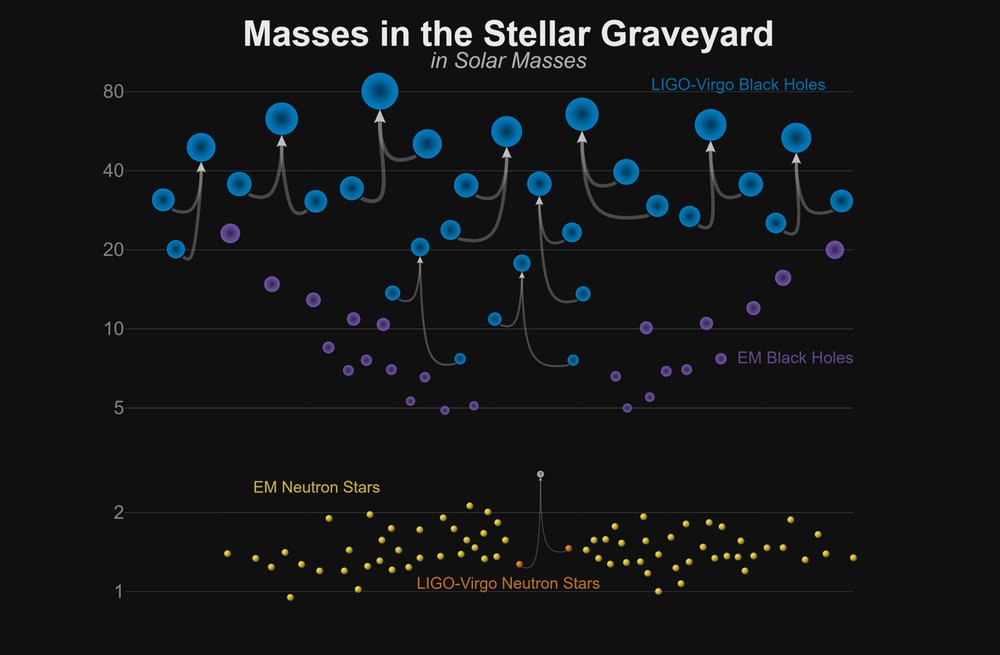
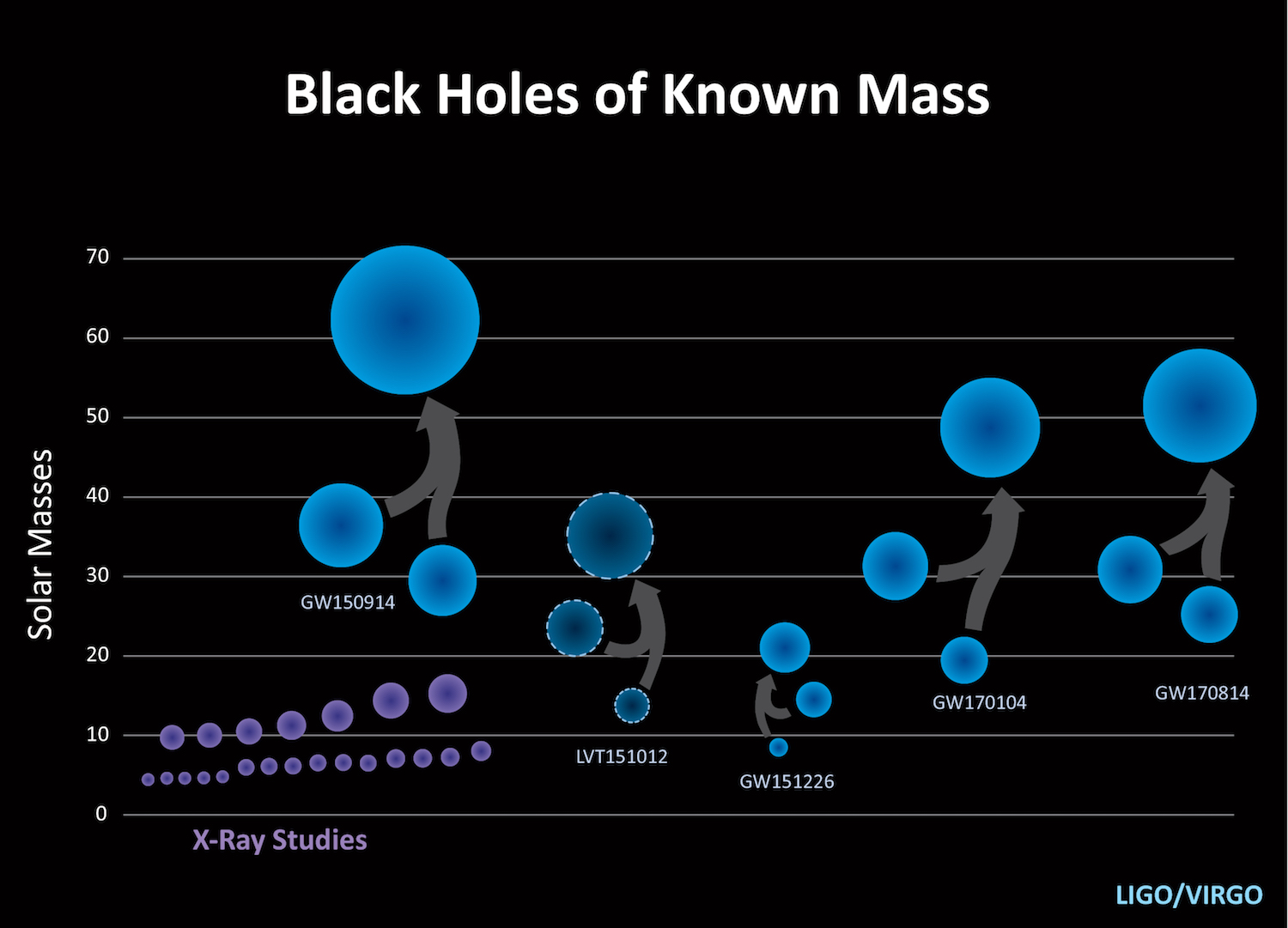
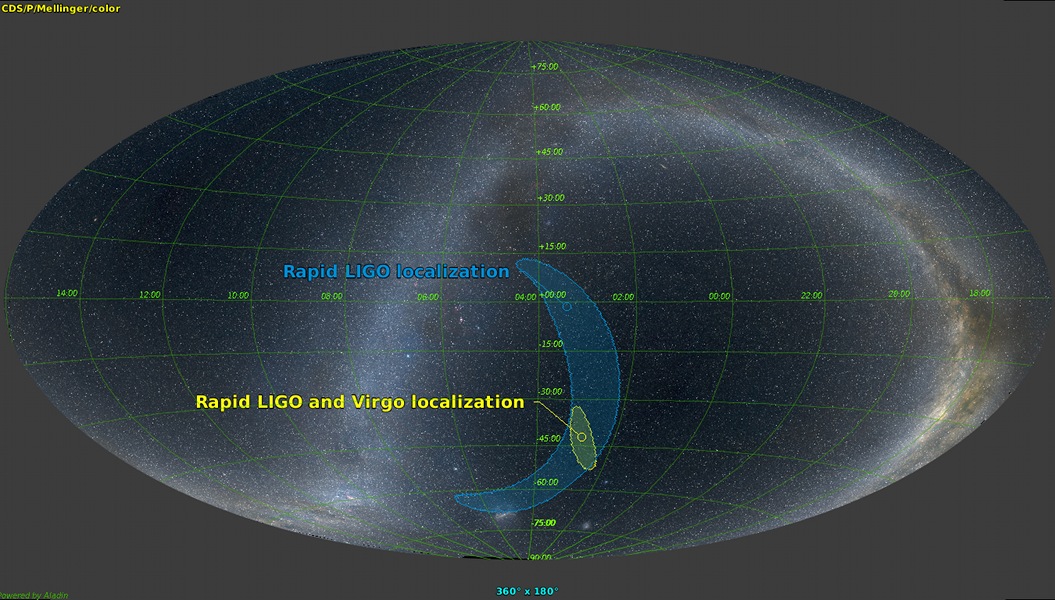
Image: Shown in blue are the black holes found by LIGO. They were found by the gravity waves detected by LIGO that were produced by the inspiral of the 2 initial progenitor black holes. The black holes orbit around each other until they finally collide to produce the larger black hole indicated by the arrows. The lighter blue indicates the lower probability event. The last pair of black holes was found by LIGO in conjuction with Virgo, an Italian interferometer, which had just undergone a major upgrade. The detection by three detectors as opposed to just the two detectors of LIGO means that, for this last detection, the location of the signal in the sky was identified to within a 60 square degree region, much better than with just the two LIGO detectors which would have given 1160 square degrees.
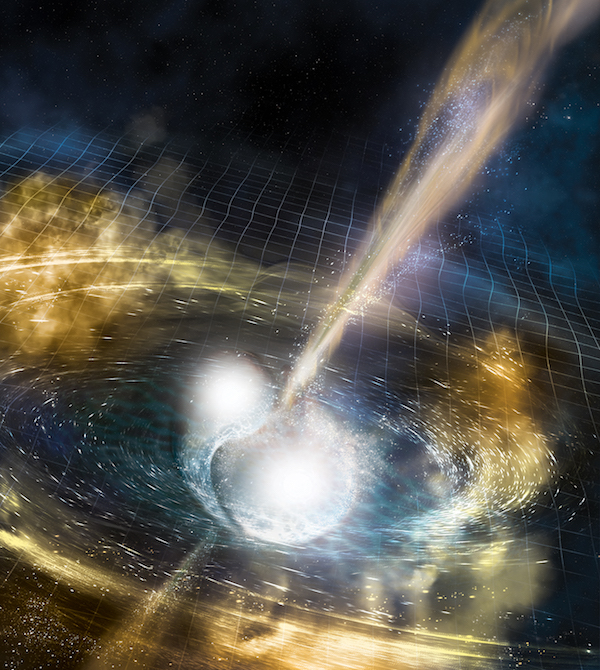
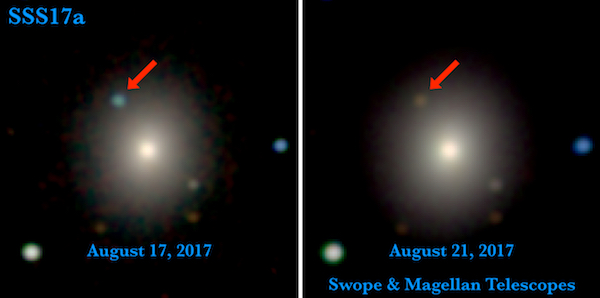 These images show pictures taken by telescopes sensitive to visible and near infrared light (Swope and Magellan telescopes). They show the collision region (upper left indicated by red arrow) that generated the graviatational waves detected by LIGO and VIRGO. The source, after merging to one object, is labeled SSS17a. The left image is from August 17, 2017, 11 hours after the gravity wave detection. The right image is from four days later, when SSS17a—the aftermath of a neutron star merger—faded significantly and its color became much redder. [Image Credit: 1M2H/UC Santa Cruz and Carnegie Observatories/Ryan Foley]
These images show pictures taken by telescopes sensitive to visible and near infrared light (Swope and Magellan telescopes). They show the collision region (upper left indicated by red arrow) that generated the graviatational waves detected by LIGO and VIRGO. The source, after merging to one object, is labeled SSS17a. The left image is from August 17, 2017, 11 hours after the gravity wave detection. The right image is from four days later, when SSS17a—the aftermath of a neutron star merger—faded significantly and its color became much redder. [Image Credit: 1M2H/UC Santa Cruz and Carnegie Observatories/Ryan Foley]
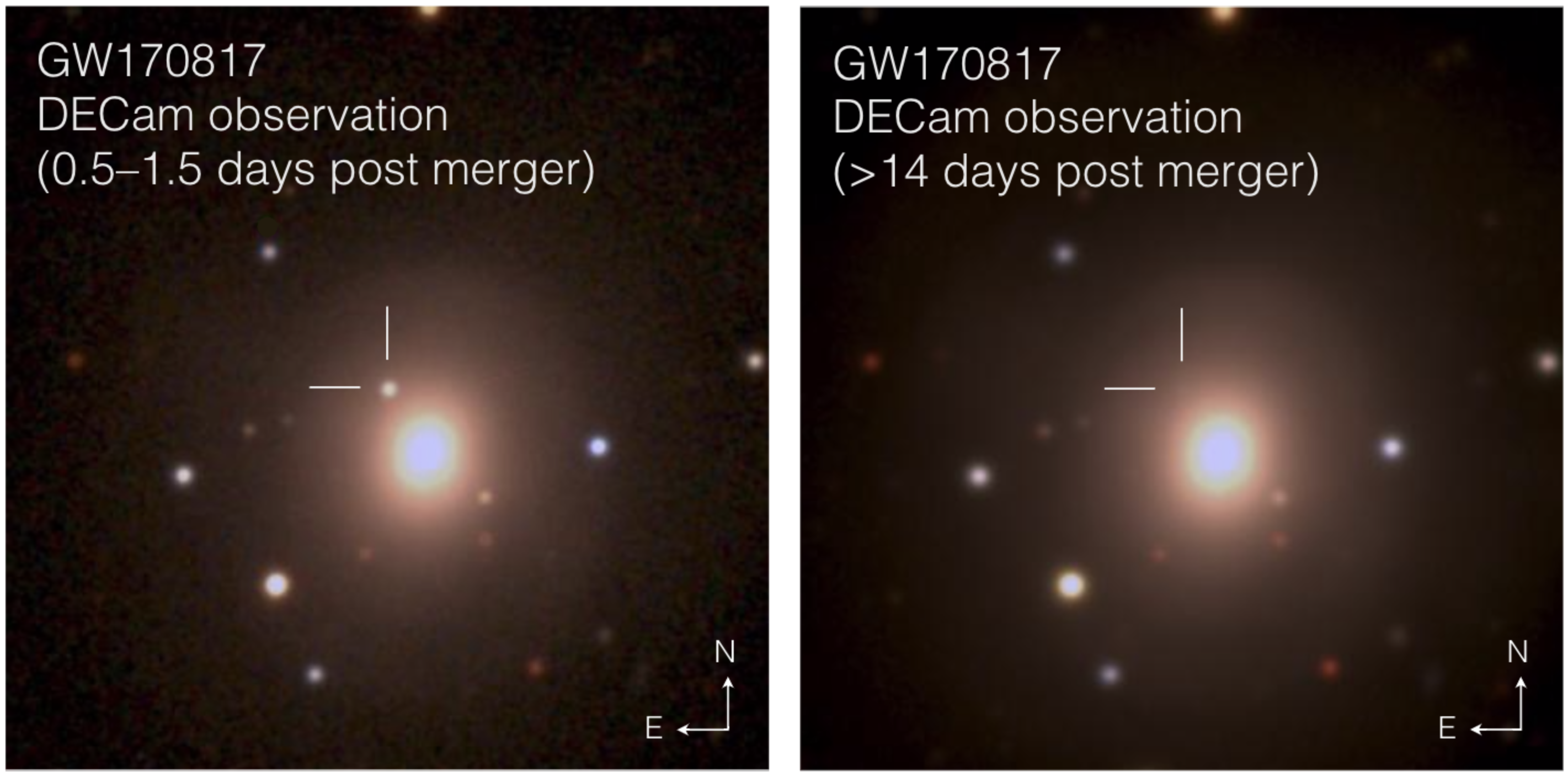 The neutrons stars detected were in the Galaxy labeled NGC 4993. The collision region is the upper left dot. The left image was taken in the infrared on 2017 August 18 and combined with images taken with green and red filters 1 day later. The right image shows the same area two weeks later. Note how much dimmer the image is after the collision has settled down. Each image is 1.5 arcseconds on a side. [Image Credit: Soares-Santos et al. and DES Collaboration]
The neutrons stars detected were in the Galaxy labeled NGC 4993. The collision region is the upper left dot. The left image was taken in the infrared on 2017 August 18 and combined with images taken with green and red filters 1 day later. The right image shows the same area two weeks later. Note how much dimmer the image is after the collision has settled down. Each image is 1.5 arcseconds on a side. [Image Credit: Soares-Santos et al. and DES Collaboration]
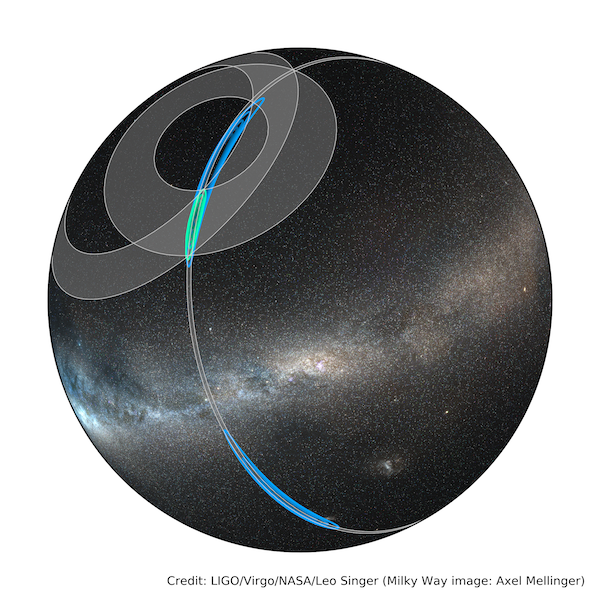
LIGO finds the location of the a source in the sky (here represented as a spherical shell) by triangulating from the three detector locations. The gray rings give an indication of the region to which each pair of detectors narrows the location of the source of the gravity waves. [Image credit: Axel Mellinger]
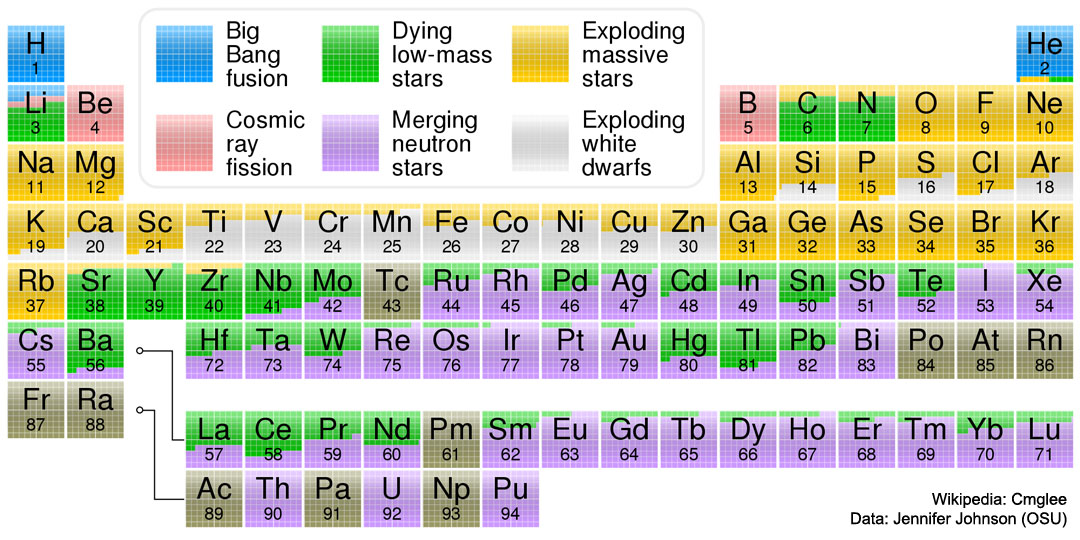
The elements in light purple above have been generated by neutron star mergers like the ones detected by LIGO.
